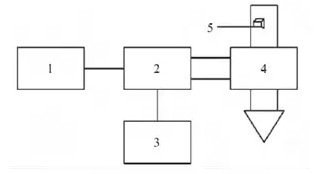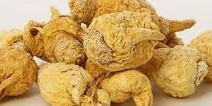Study on the effect of different drying methods and grinding particle size on the active ingredients and odor of Maca
The effects of microwave drying equipment, hot air drying and freeze-drying on mustard glycoside, macamide and macaine in Maca were compared. Maca powder of 200 mesh, 500 mesh, 800 mesh and 1000 mesh was prepared by ultrafine comminution technology.

The sensory odor and surface particle characteristics of Maca during drying and pulverizing were evaluated by electronic nose and scanning electron microscopy. The results showed that natural drying and hot air drying could take into account both the retention of mustard glycoside and the enrichment of macamide in maca, and could maintain the sensory odor better. It was an ideal drying method. Ultra-fine grinding can retain mustard glycoside and improve sensory odor, but it is not conducive to the enrichment of macamide.
Key words: Maca microwave drying; ultrafine grinding; drying process; mustard glycoside; macadam

Maca, nicknamed Lepdium meyenii Walp, is an annual or biennial herb belonging to the genus Cruciferae and Solitary Vegetables. Its plant height is about 15-20 cm. It is native to the Andean Mountains of South America at an altitude of 3,500-4,500 M. Maca is the only hypocotyl species in the genus Lepidopsis with a thick hypocotyl. Underground expanded storage roots are the main edible part with a diameter of 2-5 cm. Their surface colors are yellow, white, purple and red. Their taste is slightly sweet, slightly spicy and have a stimulating odor.
Modernization studies have proved that Maca's wide range of colors is inherent in this species, which has no direct relationship with quality, but the content and species of bioactive components in different colors of Maca are different. Maca contains mustard glycoside (glucosinolates), macaine, macalamide and other alkaloids. It has anti-fatigue, reproductive enhancement, neuroprotection, endocrine regulation and other biological activities. It is nutritious, safe and has no side effects. It has been used in Peru for more than 5,800 years.
Since the 1980s, the World Health Organization and other international organizations recommended that countries promote the Maca industry, and then Maca health products were popular in the United States, Europe, Japan and other places; in 1992, Maca was listed as a rare plant by the International Institute of Plant Genetic Resources;
In 2002, the Ministry of Health officially approved Maca to enter China. In 2003, Maca was successfully planted in Lijiang, Yunnan Province. In 2011, the Health Planning Commission approved Maca powder as a new resource food. Then the Maca industry entered a development period in China. In 2014, the value of Maca industry reached 10 billion yuan, and the international industry value reached 10 billion dollars.